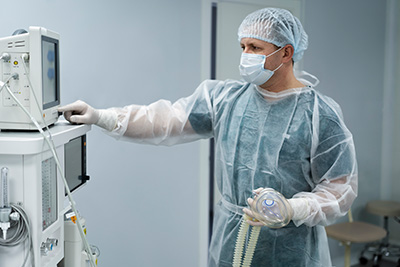
Ambulatory Surgery Centers (ASCs) play a pivotal role in delivering efficient and high-quality surgical care to patients. Central to their success is meticulous planning, especially concerning medical equipment. In this article, we delve into the indispensable significance of medical equipment planning for ASCs, highlighting its impact on operational efficiency, patient safety, and the overall patient experience.
Efficiency in Everyday Operations
Efficiency is the cornerstone of ASC operations, where streamlined processes directly translate to improved patient care. Medical equipment planning ensures that the right tools are in the right place at the right time, minimizing delays and optimizing workflow. From basic instruments to advanced technology, every piece of equipment is strategically positioned for seamless accessibility, allowing surgical teams to focus on patient care without hindrance.
Ensuring Patient Safety and Experience
Patient safety is paramount in any healthcare setting, and ASCs are no exception. Proper medical equipment planning significantly reduces the risk of errors and complications during procedures. From sterile processing departments to patient recovery areas, the layout and design of equipment play a critical role in maintaining a safe environment for both patients and staff. Moreover, a well-planned facility contributes to a positive patient experience, enhancing satisfaction and fostering trust in the healthcare provider.

Engaging an Equipment Planner from the Outset
The importance of involving an equipment planner from the initial phases of ASC construction or redesign cannot be overstated. These experts bring invaluable insights into space allocation, workflow optimization, and equipment selection. By collaborating closely with architects, equipment vendors, installers, and clinical staff, they ensure that every aspect of equipment planning aligns with the unique needs and goals of the ASC.
Designing the Sterile Processing Department
The Sterile Processing Department (SPD) serves as the backbone of ASC operations, responsible for instrument sterilization and supply management. Proper design and layout are crucial to its efficiency and compliance with regulatory standards. An experienced equipment planner understands the intricacies of SPD design, from workflow optimization to infection control measures, ensuring seamless operations and adherence to best practices.
Meticulous Patient Flow Planning
Patient flow, from check-in to discharge, requires meticulous planning to minimize wait times and maximize efficiency. An equipment planner plays a pivotal role in designing patient areas, ensuring smooth transitions between stages of care. By optimizing space utilization and strategically placing equipment and supplies, they facilitate a seamless flow of patients through the ASC, enhancing both efficiency and satisfaction.

Coordinating Procurement and Installation
The procurement and installation of medical equipment involve complex logistics that require careful coordination. An equipment planner navigates this process seamlessly, from selecting vendors and negotiating contracts to overseeing installations and ensuring compliance with regulatory requirements. They oversee everything from the installation of shelving to architecturally significant equipment like lights, sterilizers, and med gas systems, as well as portable equipment like C-arms and surgical microscopes, among others.
Facilitating Future Expansion
Anticipating future growth and expansion is essential for the long-term success of an ASC. An experienced equipment planner incorporates scalability into the facility’s design, allowing for seamless expansion as demand increases. By planning for future needs and designing flexible spaces, they ensure that the ASC remains agile and adaptable in the face of evolving healthcare trends and patient volumes.
Key Takeaways
In conclusion, medical equipment planning is a cornerstone of success for ambulatory surgery centers, influencing efficiency, safety, and patient satisfaction. From the design of sterile processing departments to the coordination of equipment procurement and installation, the expertise of an equipment planner is invaluable at every stage of ASC development. By prioritizing proper planning and collaboration, ASCs can optimize their operations, deliver superior patient care, and position themselves for future growth and success.